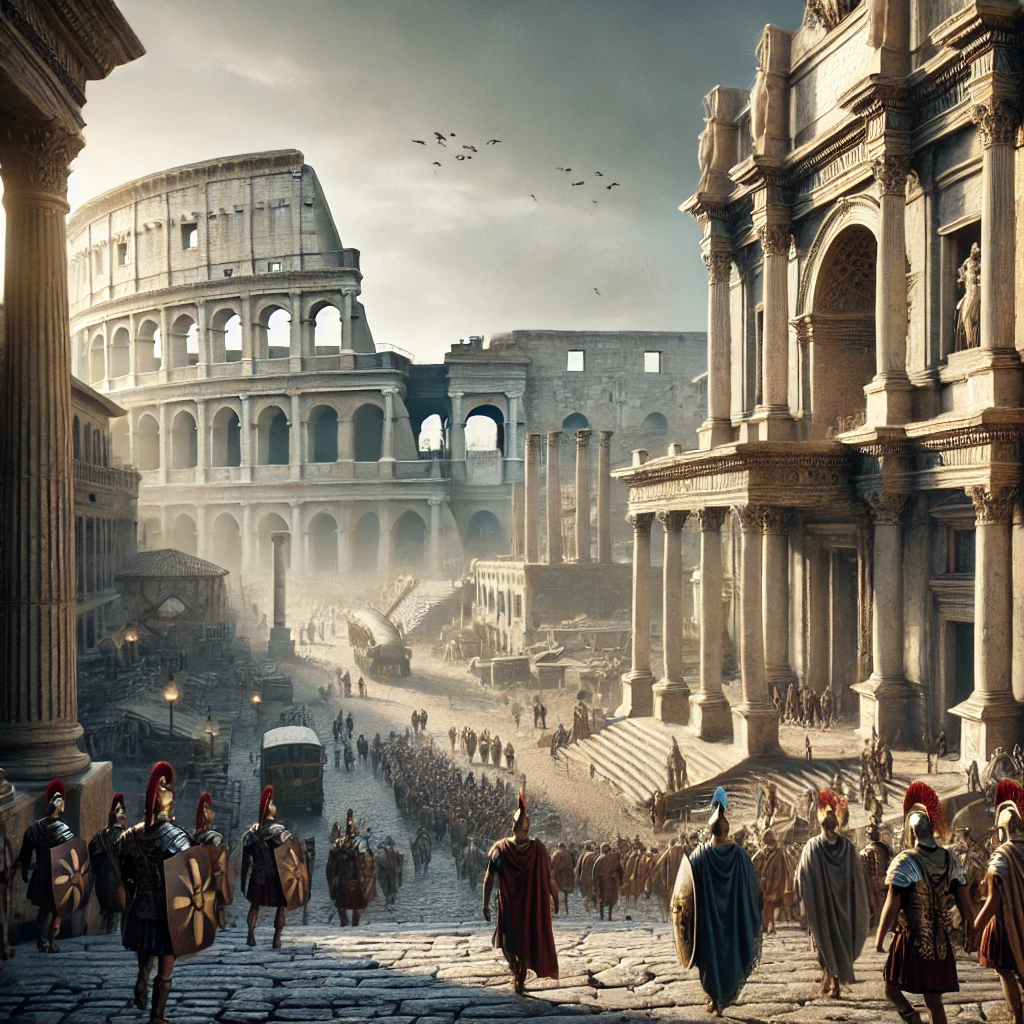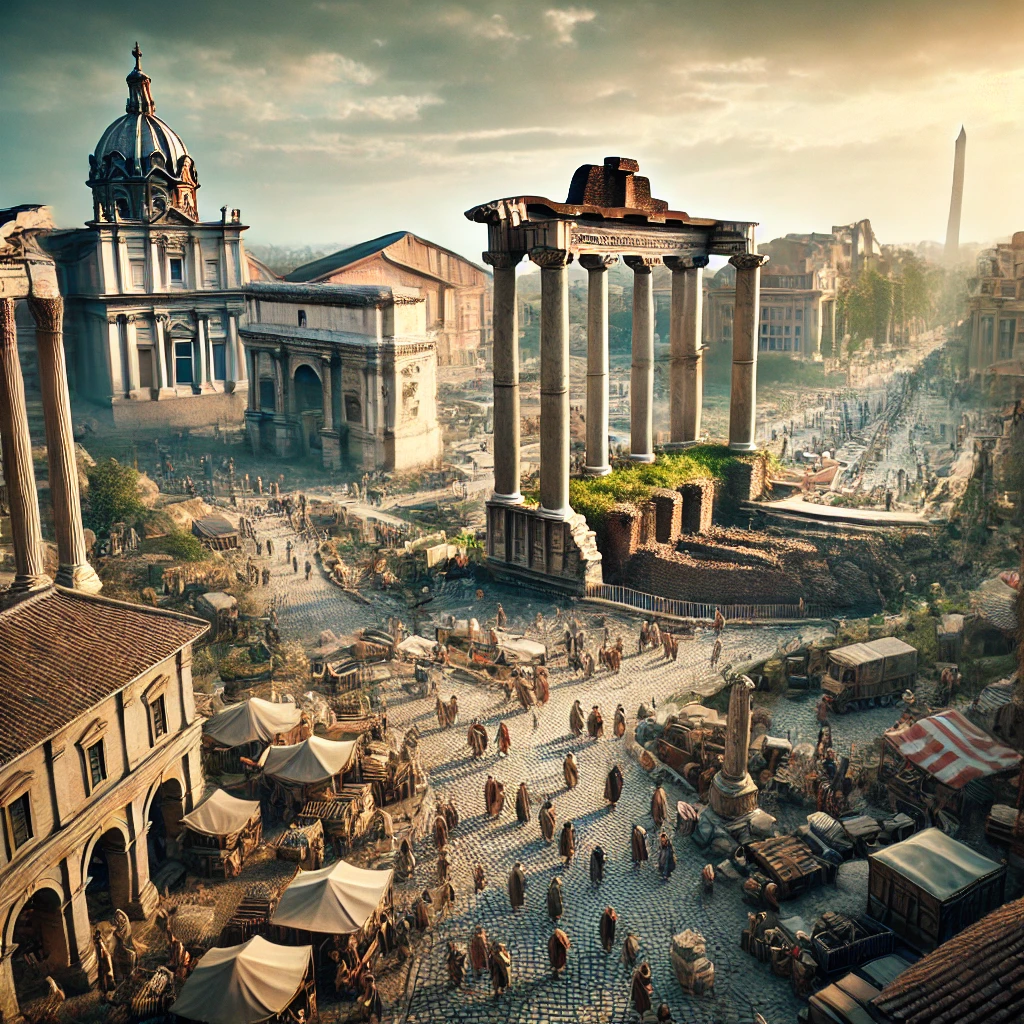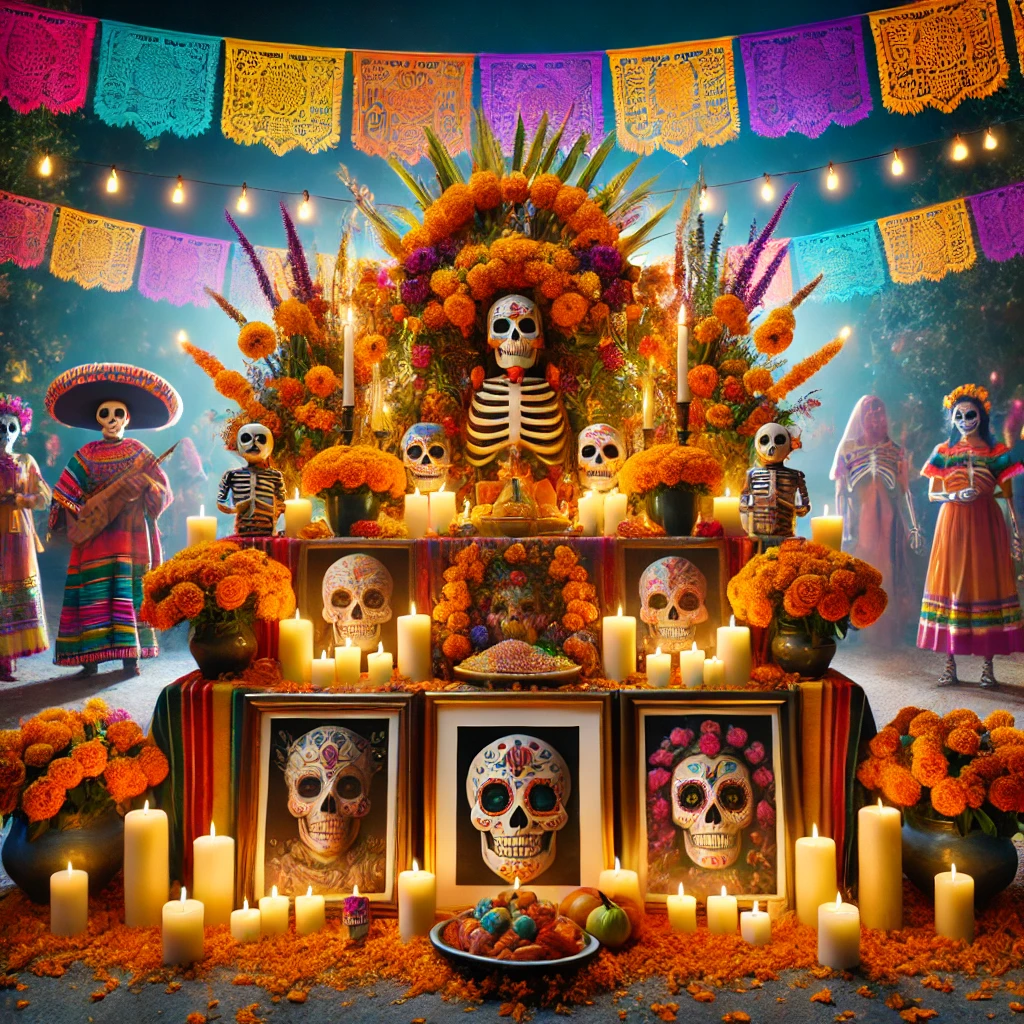Table of Contents
Introduction to the Roman Empire
The Roman Empire, a pivotal force in world history, emerged from the Roman Republic following a series of political transitions and military conquests. Spanning from 27 BC until the fall of the Western Roman Empire in AD 476, this vast empire showcased remarkable geographic expansiveness, reaching territories across Europe, North Africa, and parts of the Middle East. At its zenith, the Roman Empire encompassed diverse cultures and peoples, creating a melting pot of traditions and ideas that would significantly shape subsequent civilizations.
The Republic, established in 509 BC, is regarded as the precursor to the empire. During this time, Rome was characterized by a complex system of governance that included elected officials and a Senate. This setup laid the groundwork for the later imperial structure. As the Republic faced internal strife and external threats, ambitious leaders such as Julius Caesar emerged, signaling the transition towards an imperial system. The establishment of the Empire began with Augustus, who, as its first emperor, solidified Rome’s power and initiated an era known as the Pax Romana, a period of relative peace and stability across the empire that lasted for approximately two centuries.

The Roman Empire’s significance extends far beyond its military conquests and political advancements. Its influence on law, governance, and culture remains evident in many modern societies. Concepts such as citizenship, legal rights, and representative governance can be traced back to Roman innovations. Additionally, Roman art and architecture, characterized by monumental structures like the Colosseum and aqueducts, continue to inspire contemporary designs. The Latin language, the empire’s lingua franca, is the foundation for the Romance languages spoken today, further emphasizing the empire’s lasting legacy. As a historical behemoth, the Roman Empire serves as a fascinating case study for understanding the interconnectedness of ancient civilizations and their impact on the modern world.
The Founding Myths of Rome
Rome’s founding myths have played a pivotal role in shaping the identity of the city and its people throughout history. Central to these myths is the legendary tale of Romulus and Remus, twin brothers believed to be the sons of the god Mars and the Vestal Virgin, Rhea Silvia. According to the myth, the twins were abandoned at birth and subsequently discovered by a she-wolf who nurtured them. This story not only highlights the divine ancestry of Rome’s founders but also symbolizes the city’s connection to nature and strength.
The rivalry between Romulus and Remus culminated in a significant and dramatic event—the fratricide of Remus. As the story goes, Romulus, after establishing the city of Rome on Palatine Hill, sought to delineate its borders. In a moment of contention, he killed his brother, an act that would forever mark the foundations of Rome with both glory and tragedy. This narrative serves to illustrate the themes of conflict and triumph that permeate Roman history.
Beyond the mere storytelling, these myths fostered a strong sense of collective identity among the Romans. They provided a historical context for understanding the origins of their society, linking them to divine and heroic figures. Such narratives reinforced the values of courage, loyalty, and the importance of civic duty, all of which became integral to Roman social and political life. Moreover, the legends established a narrative framework through which subsequent generations understood their role in the Empire’s expanding legacy.
In summary, the myths surrounding the founding of Rome, particularly the tale of Romulus and Remus, have significantly influenced Roman identity. These stories have not only shaped sociopolitical structures but have also persisted in cultural consciousness, echoing the significance of these foundational narratives throughout the history of Italy’s Roman Empire.
The Roman Republic: Origins and Structure
The Roman Republic, established in 509 BC, marked a critical transition from monarchic rule to a more representative form of governance in ancient Rome. The collapse of the last king, Tarquin the Proud, catalyzed the creation of a Republic that prioritized democratic principles while still retaining significant influence from aristocratic elements. This innovative structure was instrumental in shaping the political landscape of Rome and laid the groundwork for its imperial expansion.
At the heart of the Republic’s governance was the Senate, a body comprised mainly of patricians or the aristocratic elite. The Senate held substantial authority, advising magistrates and guiding policy decisions. Although not a legislative body in a modern context, its influence over financial and foreign affairs was paramount. Complementing the Senate were the consuls, the highest-ranking elected officials who wielded executive power. Typically, two consuls were elected annually, ensuring a system of checks and balances, as each could veto the other’s decisions. This dual leadership model reinforced the Republic’s commitment to preventing the concentration of power in any single individual.
Additionally, the popular assemblies emerged as crucial components of the Roman political framework, allowing citizens to participate in decision-making processes. These assemblies, which included the Centuriate Assembly and the Tribal Assembly, were essential for passing laws and electing officials. Over time, the dynamics between the patricians and plebeians—Roman citizens from different social classes—shaped the evolution of the Republic. The plebeians gradually gained more political rights through reforms, such as the establishment of the Tribune of the Plebs, which provided representation for the lower classes and addressed their grievances.

Consequently, the political architecture of the Roman Republic became a system characterized by a complex interaction of social classes, legislative chambers, and executive power. This innovative blend not only facilitated governance but also set the precedent for future republics around the world, showcasing the enduring legacy of Rome’s early political experimentation.
The Expansion of the Empire: Conquests and Colonization
The Roman Empire’s expansion was marked by a series of military expeditions that significantly shaped its territorial boundaries and cultural landscape. One of the most notable conflicts during this period was the Punic Wars, a series of three wars fought between Rome and the rival city-state of Carthage. These wars, spanning from 264 BC to 146 BC, not only showcased Rome’s military prowess but also resulted in substantial territorial gains, particularly in the western Mediterranean.
Following its victories in the Punic Wars, Rome expanded its influence through a combination of military conquest and colonization. This strategy allowed the empire to establish provinces that were integrated into Roman governance, providing a framework for administration and trade. Lands in present-day Spain, North Africa, and parts of the Mediterranean were brought under Roman control, facilitating the exchange of resources and cultural practices. The establishment of Roman colonies in these territories often led to the Romanization of local populations, which involved the spread of the Latin language, Roman law, and various aspects of Roman culture.
The integration of diverse peoples into Roman society was a complex process that fostered both conflict and cooperation. The influx of different cultures contributed to a unique melting pot within the empire. Indigenous populations often found themselves adapting to Roman customs while simultaneously influencing Roman culture through their traditions, beliefs, and skills. This dynamic exchange enriched the society, resulting in a more diverse and sophisticated civilization.
In addition to military victories, the expansion of the Roman Empire also relied on diplomacy and alliances. By forging agreements with local leaders, Rome was able to exert influence over vast territories without direct military conflict. This approach aided the empire in consolidating power while promoting peace in newly acquired regions, thus allowing for more sustainable governance and deeper cultural integration.
The Transition from Republic to Empire
The transformation from the Roman Republic to the Roman Empire was a complex process marked by political strife and significant figures that shaped the course of history. The late Republic encountered a series of crises, including social unrest, economic challenges, and political corruption, all of which laid the groundwork for change. One of the most pivotal figures during this era was Julius Caesar. Initially a military general, Caesar gained significant popularity and power through his military victories, particularly in Gaul. His rise to prominence posed a challenge to the traditional power structures of the Republic, troubling the Senate and igniting fears among his political adversaries.
The culmination of these tensions was his crossing of the Rubicon River in 49 BCE, an act that symbolized the start of civil war. The Senate, viewing Caesar’s ambition as a direct threat to the Republic’s integrity, declared him a tyrant. This conflict ultimately led to his victory over Pompey, another prominent leader of the time, and his subsequent appointment as dictator for life in 44 BCE. However, Caesar’s concentration of power was short-lived; he was assassinated by a coalition of senators, including Brutus and Cassius, on the Ides of March. His death sparked further chaos and civil wars, which were critical in eroding the Republic’s democratic foundations.
Following Caesar’s assassination, leadership struggled to maintain stability. The rise of Mark Antony and Octavian, who later became Augustus, indicated a shift in power dynamics. Their alliance and subsequent conflicts not only highlighted the fractures within the ruling elite but also pointed towards a new governance model. Ultimately, the defeat of Antony and Cleopatra led to Octavian’s consolidation of power and the establishment of the Roman Empire in 27 BCE, marking a profound transformation in Roman governance and society. Through these events, the transition from the Republic to the Empire illustrates the vulnerabilities of the former political system and the emergence of autocratic rule.
Cultural Achievements and Legacy
The Roman Empire is renowned for its extensive cultural achievements, which have left an indelible mark on the course of Western civilization. At the forefront of these advancements is Roman architecture, characterized by its innovative use of materials such as concrete and stone. The construction of monumental structures like the Colosseum and the Pantheon exemplifies the engineering prowess of the Romans. These architectural feats not only served functional purposes but also symbolized the empire’s power and grandeur, influencing subsequent architectural styles throughout history.
In addition to architecture, engineering played a crucial role in enhancing the daily lives of Romans. The development of aqueducts, roads, and public baths contributed significantly to urban planning and public health. The vast network of roads facilitated trade and military movements, while aqueducts ensured a steady supply of fresh water, showcasing the Romans’ commitment to infrastructure and civic well-being. Their engineering techniques, particularly in the construction of arches, domes, and roads, became foundational principles that would be emulated by future civilizations.
Literature and art also flourished during the Roman Empire, with notable writers such as Virgil, Ovid, and Cicero leaving behind a rich corpus of works that explored themes of politics, love, and morality. Roman literature not only reflected contemporary societal values but also set the stage for future literary traditions in Europe. In the realm of art, Roman sculptures and frescoes depicted both mythological and everyday scenes, integrating realism with idealized forms, which has profoundly influenced artistic expressions across cultures.
The legacy of Roman culture is undeniable; its principles of governance, legal systems, and cultural practices have permeated through time, shaping the frameworks of modern Western society. The Renaissance, a pivotal period in European history, saw a revival of interest in Roman culture, further cementing its influence. In conclusion, the cultural achievements of the Roman Empire represent a cornerstone of civilization that continues to inspire and inform various aspects of contemporary life.
The Role of Religion in the Roman Empire
The religious landscape of the Roman Empire was characterized by a complex tapestry of beliefs and practices that evolved significantly throughout its history. Initially, the Romans practiced polytheism, worshipping a multitude of gods and goddesses, each representing various aspects of life and the natural world. Major deities such as Jupiter, Juno, and Mars were central to public ceremonies and state-sponsored rituals, underscoring the importance of religion in civic life. Temples were built in their honor, and priests were appointed to oversee religious duties, emphasizing the interconnection between faith and governance.
As the empire expanded, it absorbed diverse religious practices from conquered territories, leading to an eclectic mix of beliefs. This syncretism included the adoption of foreign deities and the integration of local customs into Roman religion. Furthermore, the imperial cult, which revered the emperor as a divine figure, emerged alongside traditional religious practices. This cult not only reinforced loyalty to the empire but also served as a political tool, consolidating authority and promoting the notion of divine sanction for imperial rule.
Throughout these transitions, religion played a vital role in shaping not only the identities of individuals but also the overarching narrative of the Roman Empire. This interaction between religion and politics would have lasting implications, influencing the future of Europe and the progression of Western civilization.
The Fall of the Western Roman Empire
The Western Roman Empire, once a bastion of prosperity and cultural achievement, faced a multifaceted decline culminating in its fall in the late 5th century. Various factors contributed to this significant historical event, with economic troubles playing a pivotal role. The Empire, heavily reliant on agriculture, experienced severe downturns due to over-reliance on slave labor, which stunted technological advancement and resulted in diminishing agricultural productivity. Coupled with rampant inflation and heavy taxation, many citizens faced economic hardship, leading to increased discontent among the populace.
In addition to economic instability, military defeats severely weakened the Imperial structure. The once formidable Roman legions faced challenges from external enemies as well as internal divisions. The Empire’s military resources became stretched thin as increasing numbers of troops were needed to guard the extensive borders against external threats while also attempting to quell internal rebellions. Notably, the battles against various Germanic tribes illustrated the vulnerability of Rome’s military prowess, leading to significant losses that further destabilized the Empire.
Moreover, internal strife marked the latter years of the Western Roman Empire. Political corruption, ineffective leadership, and power struggles among military generals fragmented the central authority, causing governance to deteriorate. The division of the Empire into Eastern and Western regions created further complications, as the Western Roman Empire grappled with leadership vacuums and lack of coherent strategy amid otherwise chaotic political maneuverings. Collectively, these internal challenges undermined public trust and loyalty that were essential to maintaining a cohesive societal structure.
Perhaps the most immediate threat to the Western Roman Empire was the series of barbarian invasions. Groups such as the Visigoths and Vandals breached the Empire’s borders, often overwhelming inadequately prepared Roman defenses. The sack of Rome in 410 AD by the Visigoths marked a symbolic point of no return, illustrating the Empire’s diminished power and influence. Ultimately, the confluence of economic decline, military defeat, internal strife, and barbarian incursions culminated in the fall of the Western Roman Empire, marking the end of an era in history.
The Eastern Roman Empire: Continuity and Change
The Eastern Roman Empire, commonly referred to as the Byzantine Empire, emerged from the remnants of the Roman Empire following the division of the empire in the late fourth century. This transformation marked a significant evolution in governance, culture, and society, highlighting a distinct path diverging from its western counterpart. Its capital, Constantinople, formerly known as Byzantium, became a pivotal center for trade, culture, and diplomacy, establishing a prosperous hub that would sustain the empire for over a millennium.
Culturally, the Byzantine Empire showcased remarkable continuity from Roman traditions while simultaneously adapting to new influences. The Byzantine administration inherited Roman laws and governance structures, which were enhanced under leaders like Emperor Justinian I. Justinian’s reign is often noted for the codification of Roman law, resulting in the “Corpus Juris Civilis,” a comprehensive legal code that preserved and updated Roman legal principles, influencing many modern legal systems. Furthermore, Byzantine architecture and art evolved from classical Roman styles, as seen in grand structures such as the Hagia Sophia, which merged Roman engineering with Eastern aesthetics, creating an iconic representation of Byzantine culture.
The Eastern Roman Empire was also characterized by significant religious evolution. While the Western Roman Empire underwent a tumultuous decline marked by various invasions and the fragmentation of authority, the Byzantine Empire maintained religious unity and coherence. The establishment of Christianity as the state religion played a pivotal role in binding the empire together, leading to the emergence of a rich theological tradition. Important figures, such as Saints Cyril and Methodius, contributed to the spread of Christianity and literacy among the Slavic peoples, further extending Byzantine influence.
In essence, the Eastern Roman Empire encapsulated a unique blend of continuity and change, fostering a cultural legacy that not only preserved Roman heritage but also innovatively infused it with new elements, thus playing a crucial role in shaping European history long after the Western Empire’s dissolution.




